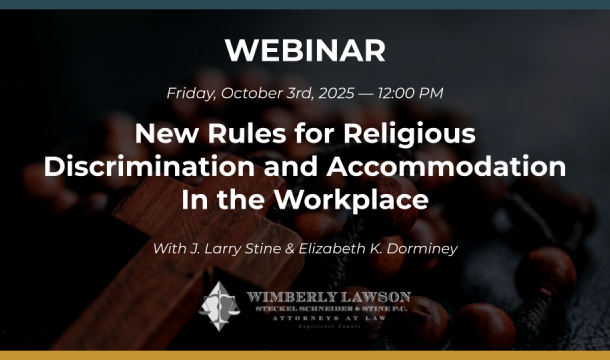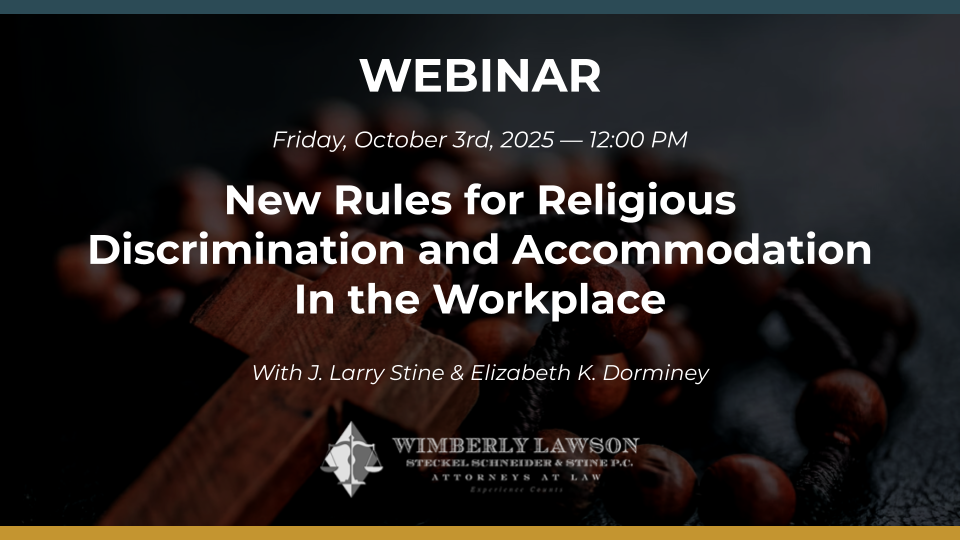Other Portions of Proposed Harassment Guidelines Address Critical Issues
Evidence must show that the complainant was subjected to harassment because of the complainant's protected characteristic. Absent an explicit change to the terms and conditions of employment, harassing conduct based on a protected characteristic is actionable when it is sufficiently severe or pervasive to create an objectively and subjectively hostile work environment. However, the statute does not impose a general civility code, but takes a "middle path" that requires the conduct to be more than merely offensive but does not require the conduct to cause psychological harm. The circumstances include the frequency and severity of the conduct; the degree to which the conduct was physically threatening or humiliating; the degree to which the conduct interfered with an employee's work performance; and the degree to which it caused complainant psychological harm. There is not a "magic number" of harassing incidents that automatically establishes a hostile work environment nor a minimum threshold for severity.
The more directly harassment affects the complainant, the more likely it is to negatively affect the complainant's work environment. Thus, harassment is generally more probative of a hostile work environment if it occurs in the complainant's presence than if the complainant learns about it secondhand. In some circumstances, a single incident of harassment can result in a hostile work environment. Determination of whether the harassment was objectively hostile requires "an appropriate sensitivity to social context," and should be made from the perspective of a reasonable person of the complainant's protected class.
The complainant can challenge an entire pattern of conduct, as long as at least one incident that contributed to the hostile work environment is timely. Harassing conduct can affect an employee's work environment even if it is not directed at that employee, although the more directly it affects the complainant, the more probative it is likely to be of a hostile work environment. A hostile work environment claim may include conduct that occurs in a work-related context outside an employee's regular workplace. Conduct that can affect the terms and conditions of employment, even though it does not occur in a work-related context, includes electronic communications using private phones, computers, or social media accounts, if it impacts the workplace.
The liability standard for a hostile work environment depends on whether the harasser is a proxy or alter-ego of the employer; supervisor; or non-supervisory employee, co-worker or non-employee. If the harasser is an alter-ego or proxy of the employer, the employer is automatically liable for unlawful harassment. The employer is vicariously liable for a hostile work environment created by a supervisor. If the supervisor took a tangible employment action as part of the hostile work environment, then the employer is automatically liable for the hostile work environment. If the supervisor did not take a tangible employment action, then the employer can raise the affirmative defense that: (1) the employer acted reasonably to prevent and promptly correct the harassment; and (2) the complaining employee unreasonably failed to use the employer's complaint procedure or take other steps to avoid or minimize harm from the harassment.
These steps usually consist of promulgating a policy against harassment, establishing a process for addressing harassment complaints, providing training to ensure employees understand their rights and responsibilities, and monitoring the workplace to ensure adherence to the employer policy. The guidelines go on to specify features that at a minimum must be contained in the anti-harassment policy to be effective, as well as features for the complaint process to be effective.
An employer has notice of harassment if an individual responsible for reporting or taking corrective action with respect to the harassment is aware of it, or if such an individual reasonably should have known about the harassment.
The alleged harasser should not have supervisory authority over the individual who conducts the investigation and the individual should not have any direct or indirect control over the investigation. If there are conflicting versions of relevant events, it may be necessary for the employer to make credibility assessments so that it can determine whether the alleged harassment in fact occurred. After completing its investigation, the employer should inform the complainant and alleged harasser of its determination and any corrective action that it will be taking, subject to applicable privacy laws. After taking corrective action, the employer should monitor the situation to insure that the harassment has stopped. The employer is not required to impose discipline if, after a thorough investigation, it concludes that the alleged harassment did not occur, or if it has inconclusive findings. Nevertheless, if the employer is unable to determine whether the alleged harassment occurred, the employer may wish to consider preventive measures, such as counseling, training, monitoring, or issuing general workforce reminders about the employer's anti-harassment policy.
The guidance also addresses emerging legal requirements such as harassment based on conditions related to pregnancy and childbirth, including abortions; LGBTQ harassment; and issues pertaining to the accommodation of religious expression. The guidelines indicate that harassment can include denial of access to a bathroom or other facility consistent with an employee's gender identity, as well as use of an inconsistent name or pronoun.
This article is part of our November 2023 Newsletter.
View newsletter online
Download the newsletter as a PDF
Related Content
Get Email Updates

Trump Nominates Appointments to NLRB and EEOC but Policy Changes Likely to Be Delayed

DOL Launches Self-Audit Programs Designed to Help Employers Improve Compliance

DOL Must Release EEO-1 Reports to the Public under Open Records Laws

Current Advice on Active-Shooter Situations

New Policy for Federal Workers and Religious Expressions




